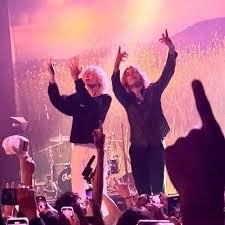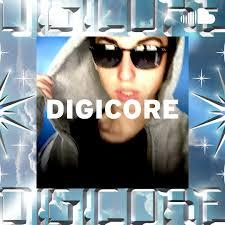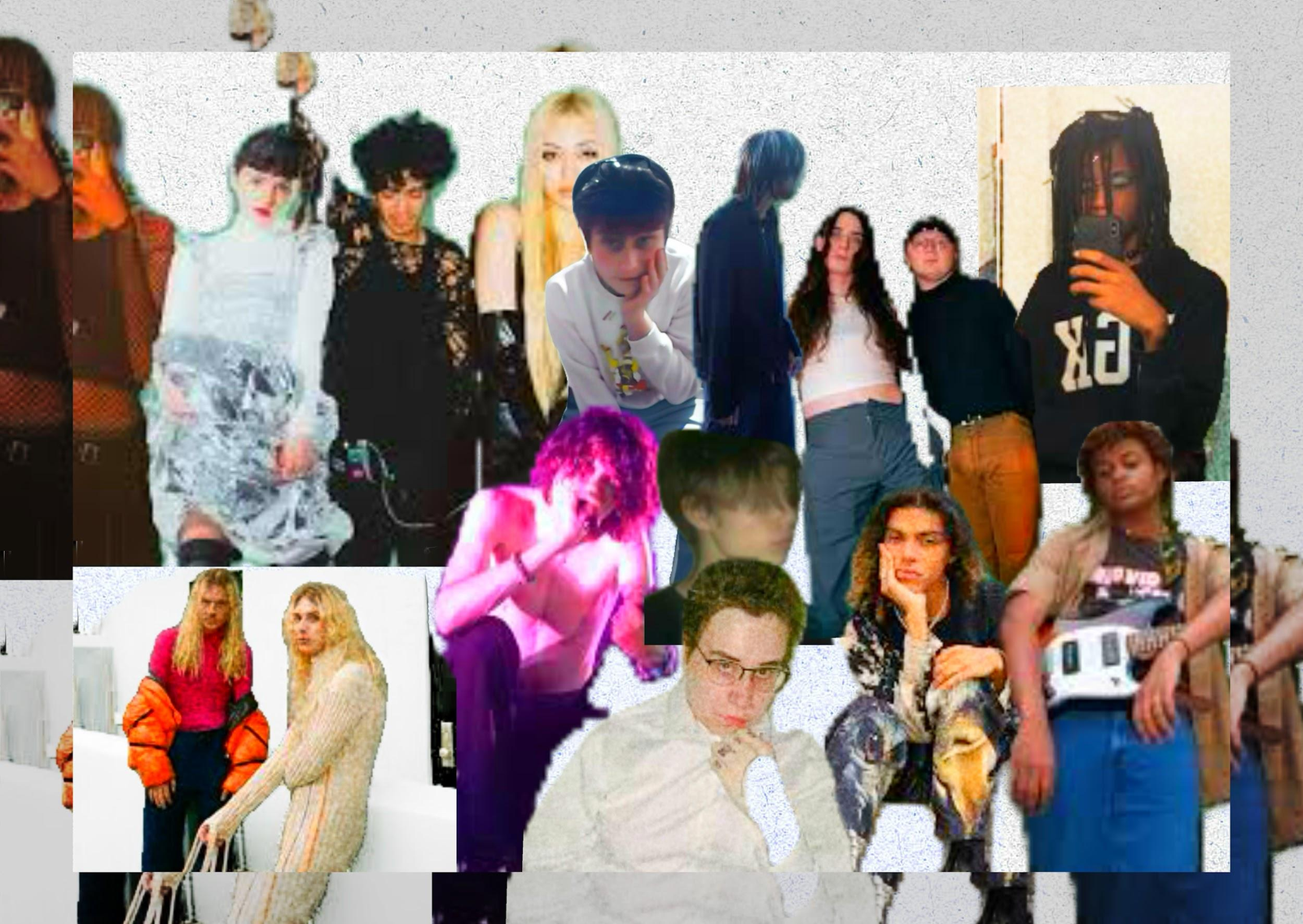It seems that as time goes on, upcoming generations and “open minded” individuals catch earworms for overstimulated synths and thrashing distortions and clings. At least that’s how it would appear to anyone who hasn’t yet subsidized an ear towards this flamboyant “genre?” of music. Having been an unopened treasure for music press and fiends of pop culture, Hyperpop spawned as an unpredictably bursted description of music to feed the inner ADHD that post-quarantine minds and ears have craved. Rolling Stone, Billboard, and Deezer ran quick to demystify this electronic genre. Other major press releases & reviews have stoned an eye towards this spawn of glitchy EDM, like The Atlantic, having razed it as the “countercultural sound of the 2020’s” in March of 2021.
Unfortunately, this didn’t seem to last as long as major sources have assumed it to.
Or did it?
Behind the “dying” numbers of a spotify playlist lay countless artists who took off into the mainstream media and signed with labels housing artists among Taylor Swift, Nicki Minaj, and Olivia Rodrigo.
But how did this subgenre evolved by teenagers producing in their bedrooms lead to unrecognizable circumstances for its “creators”? Via interview, our team members were able to meet and discuss with some of these artists in their upbringing of this debatable genre. It feels almost as if no other sublime of modern American music can lash into the abnormal ‘realness’ evoked by its metastasized artists and producers. Rooting to the depth of FL Studios individualized usage prime, we fell nothing short of impressed at how some of Hyperpops truly profound artists managed to emerge their ball game into the major leagues.
If the word ‘simulation’ connotes an imitation of something, then hyperpop is both a simulation of itself and the music it claims to represent. An absolute nebulous term, vibrating a huge range of songs and sounds that seem bound solely by their propensity towards the extreme. Industry heads love it, artists hate it. In less than two years, it’s gone from genre du jour to genre du don’t – it’s very mention is enough to elicit eye rolls from anyone involved. “It feels as though anyone pushing the boundaries in electronic pop right now is being labeled ‘hyperpop’,” says London artist twst. “I imagine it can be frustrating for people who feel like they’re being put into a box, and one that’s specifically being curated by corporate hands since ‘hyperpop’ is a Spotify-coined term.” Or take for account that even Interscope’s, Glaive, has also been reluctant on the term but rather prideful among the history he claims isn’t completely seen behind it. North
Carolina’s 19 year old pop star was one of many that started producing through these sounds of bubblegum bass, or “beep beep boop boop sounds” as Glaive ironically explained, that lead him to co-signing with Taylor Swift and performing alongside The Kid LAROI in Tillburg and Copenhagen. Spiteful appears to be an understatement when boxing categories around young artists.
Glaive claims his frantic energy can synth into “Whatever you wanna say. I personally don’t call it hyperpop or refer to it with a specific ‘genre’…” he states in quotes, “but at the end of the day I’m trying to evolve my music into what I’m happiest with, not what fits into this so-called ‘genre’”.
Glaive (left) and The Kid Laroi (Right) @Tillburg
Almost all of those given the label have felt disillusioned with the term, or grown irritated by its constraints. Refer to when a press release for 18-year-old hyperpop breakout midwxst’s Back in Action EP urged critics to steer clear of the term. “He’s part of this group of young kids leading this new subset of music… but he’s definitely not boxed into the hyperpop sound and on his new music he flows beyond the genre,” it read. Even after sampling these questions deep down to some of its first own producers like Umru, Glasear, Delpha, Mir Mir, and Blackwinterwells, who have polished an extreme diaspora of the genre’s most popular sounds have expressed their incandescent thoughts during interviews and such. The fact that no one really knows what hyperpop is feeds into its nebulous nature.
To make things more confusing, Apple released its own categorization for hyperpop and named it glitchcore, biting off the success of the original Spotify and Soundcloud playlists. After growing frustrated by these made-up terms and bottom-down corporate branding exercises, artists – more bedroom producing artists like Angelus, D0llywood, Midwxst, who all previously have been categorized as hyperpop, expressed matters into their own hands, choosing the term digicore instead. As 16-year-old producer d0llywood put it at the time, “We’re not PC Music, we’re not glitchcore. We’re hyper kids making pop. The pop is loud, it’s hyper.”
“Digicore was a bit of a joke at first until people started liking that title better than hyperpop,” says Quinn, the 17-year-old producer who became the face of hyperpop in 2020, after her breakout track “i dont want that many friends in the first place” amassed tens of millions of streams and saw her become the first artist from her SoundCloud scene to appear on the cover of Spotify’s playlist. “It did attract people who were pissed at the fact nobody could find a name for their music.
“No one knows where Spotify got the ‘Hyperpop’ name from,” umru, an artist signed to PC Music, tells me. Other descendants like Glasear, who has accredited assistance for Glaive and Ericdoa’s success, lead us deeper into the history of the effect Covid-19 played alongside the pre-2020 tiktok era. Names like Emir Baller, or current artist name Mir Mir, have been shadowed in the production of multiple tracks alongside WhoKilledXIX, Umru, Delpha, and even EDM’s own 100 Gecs, recalling the work behind the scenes; solely mixing, mastering and categorically fabricating glitch effects that have stormed across nearly every screen on social media through captivating sounds and millions of videos consisting it’s Tiktok mashups. “It’s not the name itself that’s an issue, it’s the fact that every project will then be associated with the name.” The 19 year old artist and engineer from Tirana, Albania, describes insights on the lust that curators and labels possess into ‘discovering’ cores of a new genre rather than viewing it as another form of art within music. Mir Mir is another example of an unsigned creator who managed to thrive off bits and pieces through the label of hyperpop and resume with production on samples of soul and deeply tuning vocals to styles resembling 90’s R’n’B & Hip Hop. Even Kurtains, Welsh artist who opened in one of bedroom hyperpop’s first hit songs, “Spinna”, has shown a shift into production towards Indie and emo pop, claiming it to again be just another form of music that seems more expressive of these young artists.
On the topic of misrepresentation in genre and production lies France’s 21 year old Angelus, providing an evident take on digicore alongside Kuru, a 16-year-old producer who came up in the hyperpop scene with the likes of fellow Soundcloud artists d0llywood1, angelus, Blackwinterwells, waifu, MISOGI, and ginseng. Both describe the shift from hyperpop to digicore as less of a sound change, more artists getting fed up with the label put onto their work. “Hyperpop has the wonkiest combinations of sounds,” Kuru explains. “You’d have people mainly just on the cloud rap side getting grouped in with indie pop and electronic artists, and it was a confusing ordeal, because that term fit so many people. I think digicore was just more of a shift towards describing artists and sounds that felt more homemade and raw and less professional and poppy.”
SoundCloud on X: “This ain’t hyperpop. This is digicore.”
Since its initial boom, many of these young artists and producers originally slated as hyperpop have gone on to have successful careers and progressive lives that detestify the limits of the term. (Os)Quinn’s 2021 debut drive-by lullabies moves away from the saccharine tone of previous tracks, instead favoring elements of dark ambient 808’s and drum basses. Glaive has eschewed the bedroom-produced chiptune melodies of his earlier work in favor of frenetic pop and sleek production. “I think that the word hyperpop has become a bit oversaturated,” he tells Dazed writer Gunseli Yalcinkaya over email.
“I’ve definitely started to drift away from that community because now I feel like I make more pop music.”
It was only a matter of time until the hyperpop community would begin to grow weary of its limits – especially as many of the artists behind the initial boom have grown older and gained worldwide recognition. In these modern, post-quarantine and covid shutdown days, the term feels more like a corporate branding exercise than a creative flex, exhorting the question; is it time to burst the bubble and move on?



